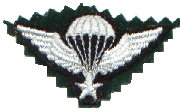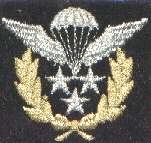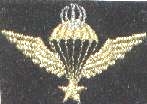 |
| Iranian history |
Welcome to the unofficial site of the Iranian Special Operation Forces
(I reckon we all died a little in that damn war, one way or another!)
|
|
| Please Note : Images displayed
on this web site are military insignia. Copyrighting combatant identification
and/or rank insignia violates international law; hence these images can
not be copyrighted. This applies worldwide.
|
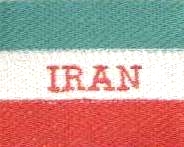 |
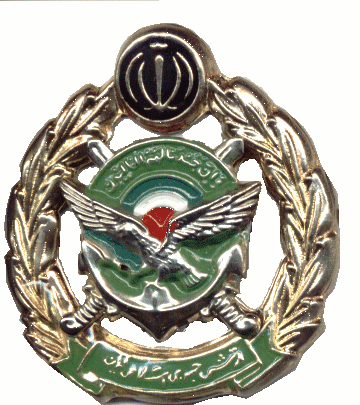 |
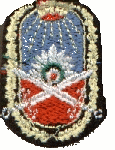 |
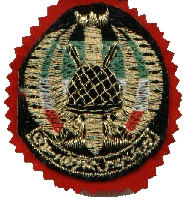 |
The modern Iranian Army was first founded between 1910 -1936 and it was trained by swedish, british, russian and german officers .
After the WW2, american and british helped to trained regular Army, Special Forces, The Imperial Guard and Marines until 1978 .
After 1978 revolution against Shah
and the stablishment of the Islamic Republic, and beginning of the war
against Sadaam's invasion of the southern Iran, the Iranian were
determined to build self independent and strong forces to drive Iraqi's
occupying army out of southern Iran and maintain a strong hold against
any potential transnational agressions.
The valuable "real world" lessens
in modern warfare they were taught during the war are amoung the best training
you can get .
Today's Army is a total of 950.000
strong men : 5 armour/artillery divisons, 8 infantry divisons, 3 fully
equipped Airborne divisons (and 1 brigade), 2 Ranger/Airborne divisons
and 2 Air Cavalry (Army aviation) brigades . (2006)
The Revolutionary
Guard Corp is NOT included .
Each division has its own personnal & administration, signal, engineer, artillery, intelligence & security, anti tank/-airplane, liaison (political-ideological directorate), chemical/biological, logistic& support and medical units .
Special forces :
Iranian "Special Operation Forces" (Spec Ops) are carefully selected military units manned by highly motivated, highly skilled, high caliber professional personnel with unique and unusual skills, doing the audacious, usually behind enemy lines. They are extremely well-trained for specific rather than general purpose and undertake unusual tasks that ordinary units might accomplish only with greater difficulty and far less effectiveness, such as :
- Those involving insurgency, counter insurgency, resistance, counter terrorism, guerilla warfare and conducting raids, sabotage and intelligence operations .
- Are unorthodox, comparatively low-cost, potentially high pay-off, often covert or clandestine methods that support warfare across the entire spectrum of conflict .
There are five principle missions which are assigned for the Iranian Special Operations :
1) Unconventional warfare (UW)
:
UW is the military aspect of an
insurgency or other armed resistance movement. UW encompasses a broad spectrum
of military operations conducted in enemy controlled or politically sensitive
territory. It includes guerrilla warfare, subversion, sabotage, intelligence
collection, and other operations of a low visibility or clandestine nature.
UW operations are primarily
conducted by indigenous or surrogate forces who are organized, trained,
equipped, supported and directed by Iranian Special Operations Forces .
UW participants are organized into three elements :
- the guerrilla force is the overt military arm,
- the auxiliary element provides clandestine support to guerrillas,
- the underground element operates in small cells and conducts subversion and sabotage.
2) Direct Action (DA) :
Missions which are offensive operations
conducted in low-visibility or clandestine manner. DA missions often employ
raids, ambushes, or direct-assult tactics. Other missions involve emplacing
demolitions or booby traps, conducting sabotage, providing terminal guidance
for laser-guided munitions, or personnel/material recovery (such as shot-down
pilots), threat personnel/material snatches.
DA missions are usually short in
duration and have a planned exfil. They are designed to achieve significant,
well-defined, and often time-sensitive results.
3) Special Reconnaissance (SR)
:
Places "eyes on target" to obtain
well-defined, time-sensetive information. It may complement other collection
efforts, or be the only method when there is a problem with weather, terrain
masking, or enemy counter measures. Typical SR missions include target
acquisition, contact with resistance forces, reporting on enemy movements,
surveillance of sensitive facilities, surviellance of enemy's key political
and military personnel, and meteorological or hydrographic reconnaissance
to support conventional operations (incl. support of Marine and fleet operations)
.
4) Counter Terrorism (CT)/ - Insurrectionary:
(-
or as the israelies call it : "Active Defence" )
Elite commando units in the Iranian
armed forces who take offensive actions (proactive
intervention , military assault) against terrorists and their bases
/infrastructure (search & destroy), or hostage rescue missions (Combat
Search and Rescue), often behind enemy-held territory or in foreign countries
(posed as civilians), using very special equipments .
These are SOLDIERS
who are not trained to arrest terrorists, negotiate with
or to interrogate them. Their missions are to activly seek out and to kill
terrorists and rescue hostages, or just kill terrorists (pre-empting strike).
No questions asked .
Their missions are always highly
classified, their existence are covered, and they work closely with the
iranian intelligence agancies .
Operating in teams as large as 12,
or as small as one, the iranian CT- units are capable of "taking down"
any type of vehicle, aircraft, ship, building, or facility.
The official policy of the hostage rescue missions involving iranian CT-operators (-opposed to AT-ops) is that all hostages are assumed to be already dead, which makes the terrorists as primary targets. Taking out hostages out of equation, so to speak, although sounds brutal, gives a freer hand to operators to deploy the best tactics in such operations, and at the same time to discourage any future hoatage-takers. It means : "If hostages have no value, there is no point of taking them!", goes the logic behind the idea. Of course the world is full of nutcases who never learn ;-)
CT missions require close coordination, team work, and the ability to make life-and-death decisions in an instant.
Very few countries have such these units which truly can considered as CT : Iranian "Tactical Assault Team","Air Sea Assault Commandos" and "Zarbat Team"; US Army "DELTA Force" & Navy SEAL "Team 6" (DevGroup); British army "22 SAS. Reg" & Navy "SBS."; Russian army/Navy "Spetsnaz"; and israeli army "Seyarat Met Kaal" .
CT is the military tool used by politicians
in their foreign policy to achieve political objectives, which also explains
why so few countries have CT units.
When the respective government decides
to put a CT unit in action, it means they don't want any prisoners. The
whole purpose is to send a massage to the terrorists :"We can get you anywhere
anytime ".
Here are some known exemples to
make my point :
- Hunting down high-value leaders
of Al-Quida by U.S. special forces around the Globe
- Killing members of the PLO, Hamas
and other palestinian organisations since 1970 to present by israeli CT-units,
either by shooting them with firearms or "painting" their cars/homes with
laser to guide the laser-guided missiles and bombs toward the targets
- Entebbe (Uganda) hostage rescue
operation (1976) by israeli army special forces where all the hijackers
were killed
- Hunting down the terrorists responsible
behind the Munich Olympics (1972) incident by israeli Mossad's assasinators
- Killing IRA members in Northern
Ireland in the 1970's untill 1990's by british SAS.
All of these operations have two things in common:
There were all carried out by military personnels and There were No prisoners!
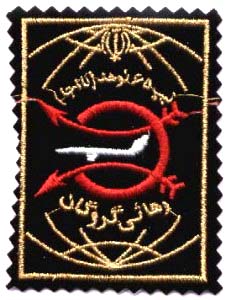 |
An Anti Terrorism
(AT) unit, is an elite unit in the police force (-almost exclusively,
but not always) of every country who takes defensive measures
(reactive
intervention) to defend against or preclude terrorist attacks. These
are
specially trained POLICE officers. Beside operators, they
also have crisis-negotiator who are trained in understanding psycology
.
Iranian police "Hostage Rescue Force";
American "SWAT"-team; Russian "Alpha"-team; German "GSG9" and French "GIGN"
are some examples of such units .
|
| Iranian "Hostage Rescue Force" sleeve patch |
Any "potato" unit world-wide wrongfully calls itself and its operations as CT now these days, with the help of ignorant media and politicians, although the correct term is AT (-if even so) ;-)
5) Consolidation operations : are long-term population security measures that protect the population and neutralize the insurgent infrastructure :
- Strike operations destroy the insurgent forces, their bases areas, and isolate them from their support.
- The goal of Remote area operations is to create "islands of support" in insurgent controlled territory.
- Border security comprises combat operations to prevent and interdict the infiltration of insurgents or smugglers .
Iranian Special Operation Forces
are normally the first to enter and last to leave a combat area. These
forces are ready, versatile, and able to operate and carry out the most
varied of combat activities and pacifications in any environment .
They can infiltrate and exfiltrate
undetected by air, land, or sea into areas other forces can not approach
without hostile reaction. They have self-contained medical ability and
are capable of living under harsh conditions with little support .
They are extremely flexible and expected
to be proficient at mastering :
- tactical field communications (radios, infrared,
microwave transmitters, etc.)
- field medical
- military intelligence
- weapons handling (such as light artillary, small arms, anti-tank weapons)
- knifefighting/throwing skills up to 6-8 m
- explosives (conventional & improvised)
- sniper/countersniper
- escape resistance and evasion
- structure penetration, boarding and securing vessels
- prisoner search/- snatch and handling, hostage situation management
- Close Quarter Battle (CQB)
- urban/build up areas warfare
- small unit tactics
- long range reconnaissance and patroling, skiing, mountain warfare, motocross/truck driving
- NBC warfare
- team training and leadership, individual and team
movements
- and land, sea and airborne operations, among other things.
The idea is that any plutoon/team member can be called upon to perform other member's specialities if need should ever arise.
Extreme environment survival is naturally part of their training. The differnces between the civilian survival and the military one are :
- A civilian/advanturer chooses where to go for his advanture and therefore choose the comfortable and suitable path, along with the suitable equipment . A soldier does not have the luxury of selecting the suitable battlefield beforehand, and therefore can not choose the suitable equipment.
- A civilian can take many survival equipments with himself to the nature, such as plenty of food, tent, extra water, various tools etc. A soldier carrying his military load (ammonution, explosives, weapons) and other military equipments, can at the best take a survival knife and probabley a small axe.
- A civilan in a survival situation, doing his best to get detected and thereby rescued. A soldier on the other hand operating deep behind enemy lines, a shut-down pilot, or an escapee must do his best to NOT be detected by enemy's patrols or inhabitants whom are actively looking for him, which of course requires entirely different skills and tactics, such as use of smokeless fire, getting rid of his waste etc.
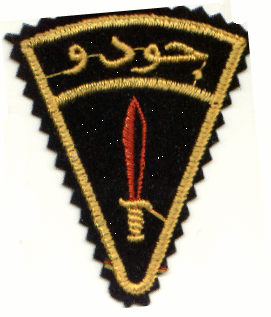 |
Additionally, all special forces
troops must reach black belt in "Combat Judo", the science of hand-to-hand
combat, involving physics, psychology, human physiology and bio-mechanics.
This
style, originally based on the japanese traditional Judo and Aikijiujitsu
which once was used by Samurai on the battlefield, has specially developed
(and perfected) by Iranian "Army Physical Center" with its tactical
(and practical) hand-to-hand combat applications for the Spec Ops troops
operating behind enemy lines and has classified moves.
The training is always carried out in as realistic a manner as possible, and it's rare for soldiers to return to barracks without having picked up a few cuts and bruises. |
| "Judo" sleeve patch |
The minimum requirments
for an iranian Spec Ops soldier is to be able to hit a stationary target
at 200 m with a rifle, and up to 40 m with a submuchine gun, and at 25-30
m with a pistol.
With a sniper rifle he should be
able to pinpoint the chest of a target figure at 650 m, and he should be
able to hit a target figure moving at 3 m/s at 500 m. He also should be
able to use an antitank grenade launcher accurately at up to 400 m and
an antitank guided missile at 500-1000 m, and throwing a hand grenade accurately from 25-50 m when standing still or when running.
Spec Ops troops literally risk death during realistic training exercises. Deadly chemichals, explosives barrages and live ammunition are routinely used .
Iranian commanders believe that men, not machines, win battles; so the foundation for combat training is the fighting men enhanced by technology, not subject to it .
Iran-Iraq war (1980-88) was a high
watermark for the Iranian Special Forces. They conducted extensive operations
in enemy-held and cross-border areas .
Although their numbers were
relatively small comparing to the regulare forces, Special Forces played
a major role in that war, and their courage were unsurpassed .
All Iranian Army special forces & Marines are fully equivalent to their counterparts in the US and British special forces .
Structure :
All special forces in the Army, Navy
and Revolutionary Guard Corp are under direct command of "Joint Special
Operations Command Center" and "Joint chief of staff" .
Additionally, each division in the
armed forces (Army, Navy, Airforce and Revolutionary Guard) must
be self-sustaining, stand-alone entity, according to the Defense Department's
guide line .
Selection :
The Iranian Special Forces clubs
(in the Army, Marines and Revolutionary Guard) are exclusive institutions
and entrance qualifications are among the thoughest on earth. The act of
joining the Special Forces is purely voluntary. Stringent criterias have
to be met before a recruit is even allowed to begin the selection phase.
As the result, the units have great potential for use in a wide range of
activities .
Just completing selection, even
if one is not ultimately assigned to the Spec Ops, is a major accomplishment
.
It is originally based on the selection systems used by the brittish "SAS." and South African "Recce" (-1970's- a legacy from pre-revolutionary era) with some modifications.
"Selection" evaluates individual
performance, self-discipline, determination, intelligent, maturity, stamina,
and above all, an individual's ability to function effectively under physical,
psychological and mental stress factors in the confussion of battlefield.
The formal selection course consists
of a physical fitness qualification test (such as covering distances of
40 km a day with full load of 25-30 kg and swimming 50 m with full load,
and at some stages, with the hunter team at their tail), land navigation
exercise. All exercises are on the clock.
Finally, the recruts must go through
a physchological evaluation and interview by exprienced officers .
It takes 2 years for basic training
of a special forces soldier. However training is always an "on-going" process.
|
|
|
|
Airborne :
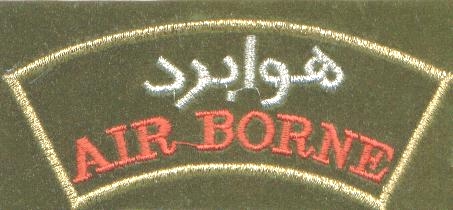 |
||||||
|
| 23 rd Airborne Divison : | |
|---|---|
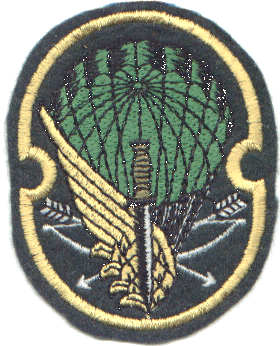 |
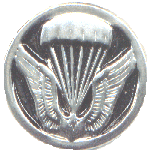 |
This is the oldest Special forces
unit in the modern Iranian army , and were originally trained by (and with)
US Army Green Berets (1948-78) and israelies paratroopers in the 70's .
The unit has seen action in Oman
(1970- 76) as the part of Shah's military aid to the Oman's dictator against
communist rebels/-insurgents, and they along with other special forces
have been most effective troops during Iran- Iraq war, specially for their
ability to conduct low-level penetration into hostile territory [ HALO
(High Altitude Low Opening) & LALO (Low Altitude Low Opening) ] .
They are trained in any aspect of
conducting special operations in land & at sea, and also counter
terrorism/ -insurgent duties within the Iranian borders .
| Other Airborne units : | ||
|---|---|---|
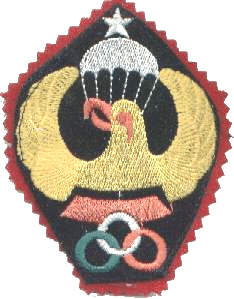 |
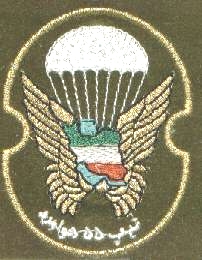 |
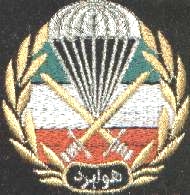 |
|
|
|
|
| 21st & 22nd Ranger/Airborne Division : | ||
|---|---|---|
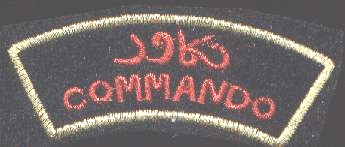 |
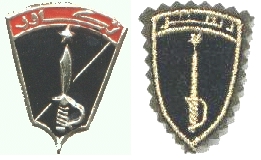 |
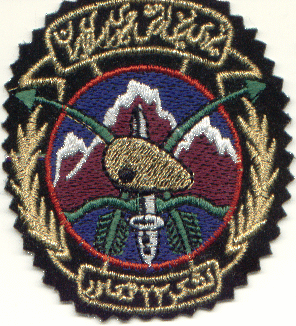 |
Though and resolute beyond the norm, these troops , along with other special forces, are ready and able to fight any where at any time, in any conditions .They are specialised in strategic and tactical long range reconnaissance, and ambush patrol, among other missions .
All Army Rangers are airborne qualified .
"Tactical Assault Team" is another
elite unit within the Rangers with counter terrorism/ -insurgent responsibility
inside
the Iranian borders .
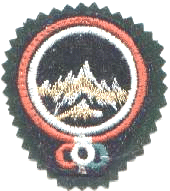 |
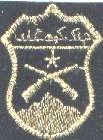 |
 |
 |
|
|
Iranian Marines (Naval Infantry) :
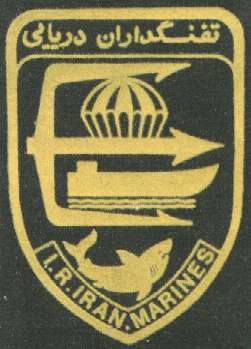 |
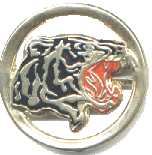 |
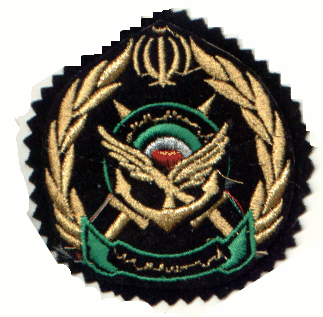 |
A brief history :
Modern Iranian Marines were originally trained by (and with) US Marines and british Royal Marine Commandos during 1940's - 78 .
Since then, and as a result of lessons taught during Iran-Iraq war (1980-88), they have improved their techniques/ tacticts and equipments .
Iranian Marines is part of the Iranian
Navy. This crack expeditionary naval strike force are experts in littoral
combat/ amphibious raids and other tactical waterborne operations, reconnaissance,
surveillance, and maritime interdiction operations, including protection
of Iranian oil platforms in the Persian Gulf, and even coastal patrols (togheter
with the Iranian Coast Guard) .
More over , they are also trained to operate in wooded areas, deserts
and mountains .
There are 2 Marine divisions : 8 th Marines responsible for northern part of Iran at the Caspian Sea, and 5th Marines operating at the Persian Gulf in the south .
They regularly conduct realistic training exercises with other Iranian Special Forces in land & at sea .
"Air Sea Assault Commandos" is another
elite unit in the marines, Elite of the Elite. They are fully capable of
conducting underwater/airborne and counter terrorism operations at sea
(such as ship-seizure missions, or hostage rescue along hostile shorelines
).
The unit is fully equivalent to
the brittish "Special Boat Squadran" and US "SEAL"-team .
|
|
Special forces in the Revolutionary Guard :
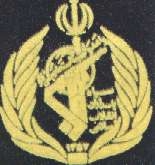 |
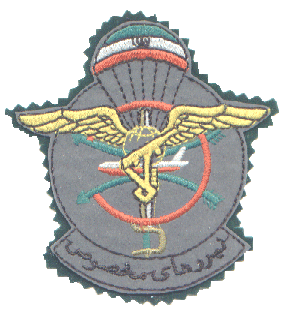 |
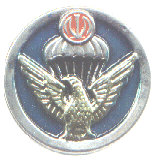 |
A Brief history :
The regular revolutionary Guard was
founded in 1978, just after the revolution against Shah, as a parallel
force to the other armed forces .
It was, and still is, a loyal force
to the fundamentalists in Iran. I guess as comparison I can say that the
difference beteween regular armed forces and Revolutionary Guard is like
regular german forces and SS during WW2.
(- I know it's not a good comparison,
but that's the closest I could come up with ;-)
Rumors say that they have been sent to southern Lebanon to train Hizboulla guerrillas and participate in their attacks against Israel back in the 80's. They had also seen action in Afghanistan with Mujahedeen's during Soviet occupation, and in Bosnian war of 1992-95 at the Muslims side. If these rumors are true or not, I don't know . However they have been officially denied .
Today's Revolutionary Guard is a
total of 550.000 strong man, with its own army, navy and air force .(2006)
They are also responsible for training,
arming and commanding of 8 volunteers divisions .
Army :
Including 9 infantry divisons and
2 brigades, 5 artillery /armour divisons and 3 Airborne/Ranger divisons
.
Each division has its own personnal
& administration, signal, engineer, artillery, intelligence & security,anti
tank/-airplane, liaison (political-ideological directorate), chemical/biological,
logistic& support and medical units .
Special Forces units are also responsible for airports & iranian airplanes security (undercover armed response on board) and other important installations, as well as body guard duties .
They also have their very own Crack
Unit, "Zarbat Team" , which is responsible for counter terrorism/-revolutionary
operations both inside and outside the Iranian borders.They
have carried out raids against CIA- financed & Iraqi-backed Mujahedin-e
Khalq Organization (MEK) terrorist bases inside Iraq (until february 2003),
also assassination of some high-profile iranian dissenters, oppose to the
government, outside Iran .
Very little is known about this
unit. They are equivalent to the British SAS. and US Delta Force
.
I've seen on some pages on the internet about the Qods units of the Iranian Revolutionary Guard. The word "Quods" is arabic name for Jerusalem. The name is purley religious, like many other things in Iran, now these days. There are no such "special units" with this name. I've personally seen boards with the name "Quads" over the top of some military installations and garisons around Iran, probably for blessing or solidarity purposes, I guess.
Navy :
It has 2 Marine divisions, each
with their own Combat Frogman regiments .
Some of my former fellow officers who are currently in active duty and wish to remain unnamed
External links
Please note : By clicking the below links, you'll leave http://iranianspecialforces.webs.com .
- The official site of the Iranian Defense Industries
- Movie about the Iran-Iraq war
- About Iran-Iraq war at Wikipedia
https://zarbatt.tripod.com/
© 2000-2011
